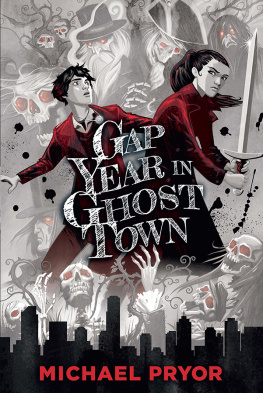a wild dedication of yourselves
To unpathd waters, undreamd shores; most certain
To miseries enough
WILLIAM SHAKESPEARE
The Winters Tale
Sad
adjective \ sad \
Feeling or showing sorrow or unhappiness.
Synonyms : blue, brokenhearted,
cast down, crestfallen, dejected,
depressed, despondent,
disconsolate, doleful, down,
downcast, downhearted, down in
the mouth, droopy, forlorn,
gloomy, glum, heartbroken,
heartsick, heavyhearted,
inconsolable, joyless, low,
melancholic, miserable,
mournful, saddened, sorrowful,
sorry, unhappy, woebegone,
woeful, wretched
I hate travelling and explorers. This is the sentence Claude Lvi-Strauss chose to open his anthropological memoir and travelogue, Tristes Tropiques first published in France in 1955 and translated into English in 1961. Lvi-Strauss dryly declares his disdain for travel books in the opening pages. I have often planned to undertake the present work, he writes, but on each occasion a sort of shame and repugnance prevented me making a start. The books original French title remains untranslated, as the proposed English translations of Sad Tropics or Tropics of Sadness lacked the subtle poignancy Lvi-Strauss intended.
It was in mid-2015 that I happened upon Mount Hopeless. Not the geological landform, but its name on a map of southern Australia; two microscopic words nestled among a tapestry of topographic contour lines. I was struck by the wonderful absurdity of this small discovery why, I thought to myself, would there be a mountain called Hopeless in the middle of nowhere? I began typing into Google Maps other depressing synonyms, and from behind the omniscient glow of my computer screen, I unearthed a bygone history of my country: Melancholy Waterhole, Disappointment Bay, Misery Island, Starvation Creek, Suicide Point. All this time I had been residing, in Lvi-Strausss words, among the vestiges of a vanished reality. After several months I had the beginnings of a collection, a kind of cabinet of depressing cartographical curiosities.
It is on maps that we discover the union of landscape and language. They are not objective representations of the world, but products of a mind; a reflection of the mapmakers culture and experiences, the time and place in which they were made. Maps are documents, artifacts, guides, authorities and stories.
In 1606, Willem Janszoon and his Dutch crew of the Duyfken were on an exploratory mission to map the coast of New Guinea when, completely by accident, they stumbled across the unknown continent of Australia. Thinking it was still New Guinea, they inadvertently became the first Europeans to set foot on this undiscovered land. Janszoon found a place,...inhabited by savage, cruel, black barbarians who slew some of our sailors, adding that, no information was obtained touching the exact situation of the country and regarding the commodities obtainable and in demand there. Dismayed by these inscrutable people and their impartiality to trade, Janszoon and his crew abandoned their mission, leaving in their wake a scene of bloody violence that left several sailors and natives dead. On his map, Janszoon gave the place the inauspicious name Cape Keerweer Dutch for turn around.
Janszoons encounter is emblematic of the journeys undertaken by European explorers during the so-called Age of Exploration, a period spanning from the 15th to the 17th century. If we are to believe from the name that the intention of such explorers was one of virtuous curiosity, a simple yearning to chart unexplored lands in the name of benevolent empires, then history presents another tale.
Australia was, to the chagrin of early European explorers, not Terra nullius , the blank, uninhabited space that filled their maps. The Aboriginal place names, which had been preserved through oral tradition for some 50,000 years, were not only topographic identifiers, but also stories of creation and mythology intertwined with the landscape. It was not with maps that Aboriginals once navigated, but songs. By reciting the songs of ancient creation myths in the correct sequence, one was able to travel vast distances across the land. After European invasion, songs and names were lost. Places were renamed, now reflecting a new kind of story; one of territorial conquest and colonial expeditions, a landscape recalling not mythical deities and spirits, but explorers, geologists, royalty and celebrities.
I came to learn that the study of place names is called toponymy, itself an obscure branch of onomastics the study of names in general. Toponyms function as both identifiers and monuments, and this was especially true in the days of colonial exploration. Many of the sad toponyms in this book originate from the Age of Exploration; not the kind of exploration we associate with stories of adventure and romance, but a desire to conquer the world, to extract natural resources, expand kingdoms and empires, to exploit and Christianize uncultured and savage peoples. It is not by coincidence that the majority of sad places are to be found in post-colonial countries: North and South America, Canada, Australia, New Zealand. The sadness that Lvi-Strauss discovered in the tropics was a vestige of the slow-burning destruction from the Age of Exploration. What he witnessed was the sadness of disappearing civilizations, a dying world, heavy with the post-colonial melancholy that his subjects were forced to bear.
The first toponymists were storytellers, those who attempted to explain the forgotten origin of place names through a weaving of history, myth and imagination. Landscape often functions as a metaphor for language, and it is said that one can read the landscape as they do a book. In that sense, these place names function as a kind of index; each name the title of a story written across the pages of the landscape. From the names might be known how here one man hoped and struggled, writes George R. Stewart in Names on the Land , how there another dreamed, or died, or sought fortune, and another joked, twisting an old name to make a new one they were closely bound with the land itself and the adventures of the people.
Behind each place name there exists a story, and in the case of these sad places, behind the story a tragic event. And while that is often true, more often the memory of that event fades, and like a weathered signpost that points to a disused path, only the name remains, echoing a time immemorial. In this book, I have attempted to follow those paths. Frequently they wind and fork, splitting into smaller paths, leading to wildly disorienting forests where it becomes impossible to separate history from mythology, fiction from fact and memory from imagination. And so this book is also a journey of unlikely digressions, paths that lead to strange and obscure histories: Soviet science fiction and religious hermits, atomic test sites and death in hotels, the uncanniness of gas stations and the melancholy of the Anthropocene.
I have not been to, nor is it likely I will visit, any of the places in this book. While it can be read as a kind of toponymic collection, it can also be read as a travel guide, or perhaps more accurately, an anti-travel guide; a directory for the crestfallen among us, those inflicted with the black bile of melancholia. In the way that landscape can function as a metaphor for language, the opposite is also true. Stories are also a form of imaginary travel, a way of traversing the landscape of the mind. In Lvi-Strausss travel book, he attempts to convince the reader not to travel, instead reminiscing about, the days of real journeys, when it was still possible to see the full splendour of a spectacle that had not yet been blighted, polluted and spoilt He writes with misanthropic despair that, The first thing we see as we travel round the world is our own filth, thrown into the face of mankind And with that he asks the reader to consider, what else can the so-called escapism of travelling do than confront us with the more unfortunate aspects of our history?












